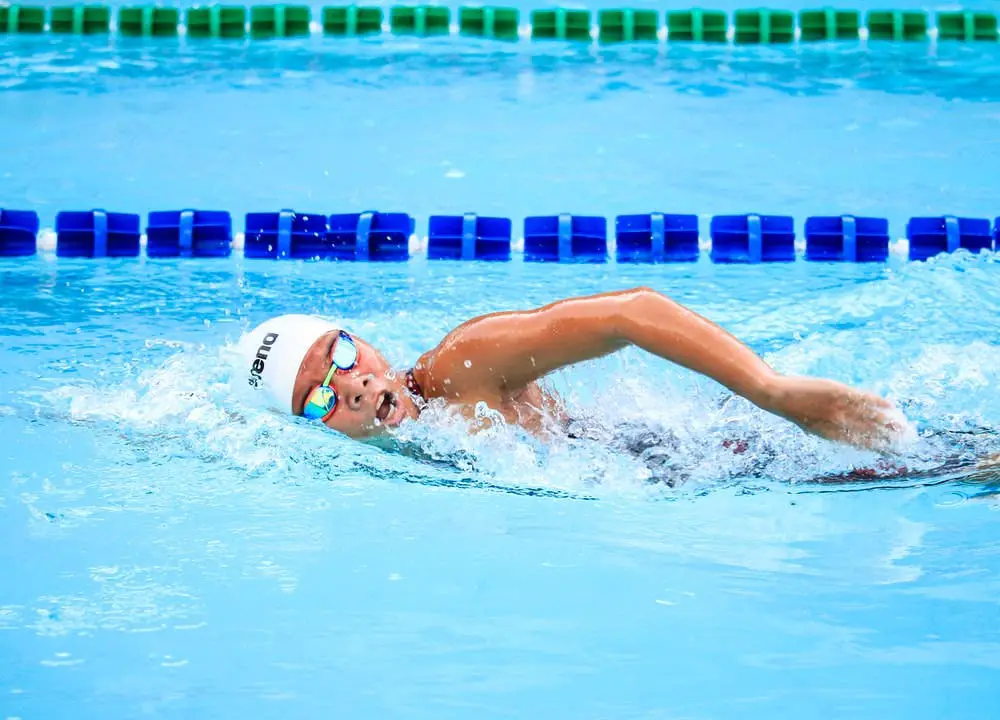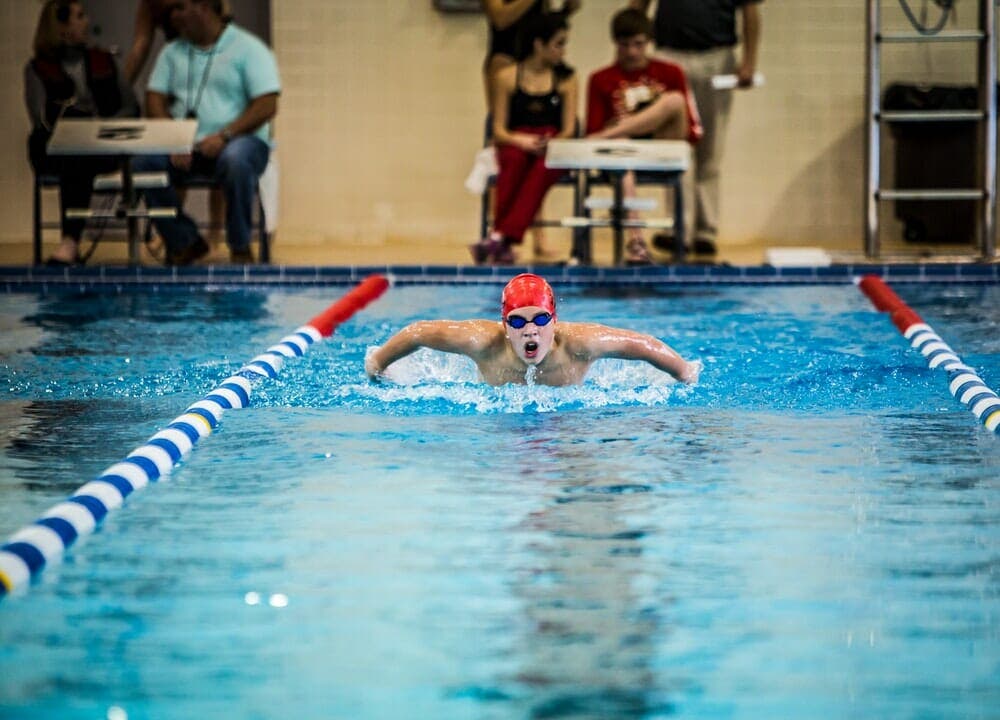Swimming training is an option for all those who want to dedicate themselves to the practice of a traditional sport. Swimming is considered one of the most complete activities because during its execution almost all the muscles of the body are exercised and, when done in the water, the appearance of muscular pains, injuries to the knees, ankles, etc. is less likely; that do appear with other sports.
Benefits of swimming training
Swimming is considered one of the most complete sports that can be practiced, as it provides great benefits for the body and health. It is a physical activity that has no age and, in fact, adapted swimming training is also recommended for young children, as it helps to develop coordination, among many other faculties and aptitudes.
Work of different muscle groups
With swimming, different muscles and parts of the body are activated at the same time, because, in order to move in the water, you must use your arms and legs, while you concentrate on breathing and being able to float. The movements are practiced simultaneously and follow a certain rhythm, so coordination skills are required.

On the other hand, to be able to carry out all these movements it is necessary to apply enough force to be able to combat the density of the water. By doing these moves during swim training, and as long as you do it consistently, you can build muscle in no time. And what muscles are worked in this type of training?
In the legs, the quadriceps, tibialis and hamstrings; in the arms, biceps and triceps. Also in the arm area (hand and forearm), the supinator and pronator muscles are activated. In the neck and back area, the sternocleidomastoid, as well as the dorsal, trapezius and deltoid muscles are activated. Finally, swimming also activates the pectoral and abdominal muscles.
Swimming training improves the lungs
Breathing plays a crucial role in swimming; thanks to this you can float and submerge your head. To be able to float properly it is necessary to inflate the lungs sufficiently and, to be able to swim with the head in the water, the use of air must be optimized; that is, knowing how to use the oxygen you breathe correctly. For this reason, swimming is an ideal sport to strengthen the lungs and, in general, the entire respiratory system.
It is even a sport that can be practiced by people with respiratory problems caused by smoking.
Improve heart health
Swimming training also brings great benefits to the cardiac system. For example, this sport lowers heart rate, regulates blood pressure, improves oxygen consumption and helps generate resistance; the horizontal position in which the exercises are performed facilitates blood circulation and prevents the heart from making an extra effort to pump it. That is, the heart does not need a great effort, as it does with other physical activities.
Benefits for the nervous system
Any sport is good for reducing stress, since physical activity allows blood to circulate to the brain efficiently; on the other hand, when practicing sports, the brain releases serotonin, dopamine and endorphins, hormones associated with happiness. Also, thanks to the water, you can relax and stay in this state, even after the training routine.
On the other hand, thanks to the use of different parts of the body, coordination is improved and helps the brain to generate new neural connections; it enhances concentration, focus and improves memory.
Rehabilitation
Swimming training is recommended for people who have injuries or are recovering from them. This is because swimming, although it requires strength to move, is a low-impact sport. Therefore, training can not only help rehabilitation, but injuries to tendons, ligaments, bones and joints are unlikely to occur.
In case of injuries, the doctor is the one who should recommend this physical activity.
Swimming routine twice a week
If what you are looking for is a sport that will help you tone your muscles, lose a couple of kilos , and, of course, improve your physical and mental health, swimming is the activity you need. But how many times should you go to the pool? The most advisable thing is to practice this sport between two and three times a week, for 40 or 45 minutes.

If swimming training is practiced constantly, you will help strengthen the muscles of the body, improve your posture and acquire all the benefits of this sport mentioned above. If you have never practiced swimming, the best alternative is to sign up with a teacher who will teach you the correct techniques of the four different swimming styles. Now, if you have been in contact with this sport before, we recommend the best routine to work your whole body, twice a week.
Remember that before entering the water, you should warm up a bit. You can stretch your arms, legs, and if you don’t have injuries, run or jog around the pool at a good pace for about three minutes.
First day
- Heating. Swim, freestyle or front crawl, for 200 meters at a moderate pace. This serves to stretch the muscles.
- To strengthen your legs, and with your arms on the board, swim three sets, over 100 meters, using your front crawl legs.
- To work the arms, some recommend the use of the pull-boy. This is an accessory that is placed on the legs, so all the movement that is made is from the arms. However, the use of this accessory is more advisable for expert swimmers, since the pull-boy provides a sense of balance, but it can destabilize the posture. In case of using it, you will have to swim with your front crawl arms, for 100 meters and in three repetitions.
- With the help of the board, extend your right arm and do front crawl legs, while moving your left arm. Once you’ve done three sets of 100 meters, repeat with the other arm.
- To enhance intensity and strength, four series of 100 meters of crawl at a high pace. Remember to calculate how many laps in the pool it equals. It all depends on the pool you swim in.
- To stretch, a series of 200-meter freestyle, at an easy pace.
Second day
- Similar warm up to day one.
- If you are using the pull-boy , lie on your back and hold the pull-boy with your arms, which should go below the neck. Move your feet and legs to move backstroke. If you don’t use the pull-boy, you can substitute this accessory for the board; keep in mind that you must place your head on the edge of the table, vertically and hold it by stretching your arms. Do three repetitions of 100 meters.
- To work your arms, and continuing with the back stroke, place the pull-boy between your legs, while on your back, and push yourself with your arms. Remember that the arms in this style should be extended as far as possible. Practice this exercise in three series of 100 meters.
- Perform three series of full back, over 100 meters and at a high pace.
- To work legs in another style, place your arms on the table and practice the butterfly kick, in three series of 100 meters.
- Full butterfly swim . If you don’t master this style, you can divide it into four series of fifty meters each; if you control the technique, you can practice a series of 200 meters. You should perform this exercise at a medium pace.
- To stretch and end the day, a series of 200 meters of crawl at a slow pace.